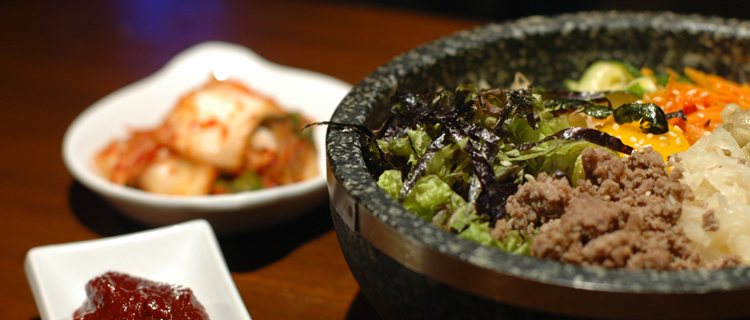|
Korean Traditional Food
Korean cuisine is based on the traditional foods and preparation techniques of Korea. From the complex Korean royal court cuisine to regional specialties to modern fusion cuisine, the ingredients and preparation are richly varied, and many dishes are becoming internationally popular.
Koreans traditonally ate seated on cushions at low tables with their legs crossed in a modified lotus position. Meals are eaten with a set of silver or stainless steel chopsticks called Jeot-ga-rak and a long-handled shallow spoon called Sut-ga-rak; the two are together known as Su-jeo, although Su-jeo can also mean a Sut-ga-rak.
Unlike other chopstick cultures, Koreans have used spoons since at least the 5th century. Unlike china and Japan, Koreans generally do not pick up their rice or soup bowls, but leave both on the table and eat from them with spoons. Banchan are eaten with chopsticks. Much of Korean cuisine consists of simple dishes such as preserved food. It is known for its strong and pungent flavors. many Korean banchan rely on
fermentations for flavor and preservation, resulting in a tangy, salty and spicy taste.
Japanese Traditional Food
In Japanese cuisine, sushi is a food made of vinegared rice combined with fish. It consists of an oblong mound of sushi rice that is pressed between the palms of the hands, with a speck of wasabi and a thin slice of topping called "Neta" draped over it. This is possibly bound with a thin band of Nori, and is often served in pairs. Sushi can be eaten either by hands or by chopsticks, although traditionally
Nigiri is eaten with the fingers because the rice is meant to be packed so loosely that it falls apart in ones mouth. Traditionally, one should start with white-fleshed or milder-tasting items and proceed into darker, stronger-flavored varieties later.
|

















